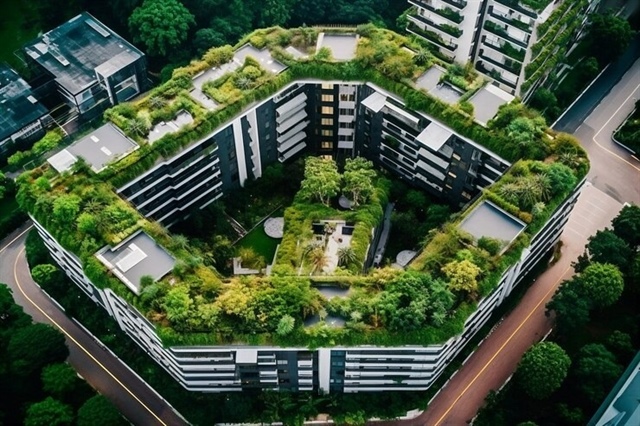|
Green-certified buildings more alluring to office market players in Vietnam’s cities
Tenants in Vietnam’s major cities are shifting to high-quality office space, increasingly prioritising spaces with green certification and modern amenities.

Green-certified buildings more alluring to office market players in Vietnam’s cities, Source: freepik.com
|
Ho Chi Minh City’s office market boomed towards the end of last year as new buildings quickly achieved high occupancy rates, contributing to pushing the absorption rate of the entire market to a record level.
Bosch Global Software Technology Company in December opened a new office over 10,000 square metres at OfficeHaus, a working space meeting LEED Gold standards in the heart of the city.
The OfficeHaus building, located in Tan Phu district, has seen its occupancy rate skyrocket from 10 to 75 per cent in just one year thanks to its LEED Gold design and flexible office solutions.
ByteDance, TikTok’s parent company, at the end of 2024 also moved from a building in District 3 to The Nexus in District 1. The Nexus has also achieved LEED certification as well as EDGE green building recognition and WELL, a set of standards for evaluating architectural design that focuses on human health.
Marvell Group and Simpson also rented space at E.Town 6 building in Tan Binh district, a building put into operation in early 2024 with LEED Platinum, the highest rating for reducing a building’s carbon footprint and promoting a healthier work environment for customers.
Meanwhile, the Thu Thiem New Urban Area located over the Saigon River continues to strengthen its position as a high-end office destination. In particular, The METT Building is attracting high-quality tenants such as Shinhan Bank of Korea and Malaysian financial and banking group CIMB.
Prime location on the Thu Thiem peninsula with state-of-the-art infrastructure has helped METT to become a top choice for high-valued tenants.
According to a report from CBRE Vietnam released last week, in 2024, the office market in both Hanoi and Ho Chi Minh City witnessed an improvement in total net absorption and slightly higher than the average net absorption recorded in the last five years.
The Hanoi office market witnessed a higher net absorption in Grade B, reaching more than 44,600sq.m, compared to around a half net absorption recorded in Grade A. Such positive net absorption in Grade B is attributed to the favourable rental policies offered by landlords of office buildings in this segment.
Meanwhile, the opposite trend was recorded in Ho Chi Minh City with the leasing demand for Grade A outpacing Grade B, with 38,000sq.m leased, compared to only 14,600sq.m in Grade B.
According to CBRE, there are big deals planned for 2025 from major corporations moving to higher quality office buildings, which will help to improve the city’s occupancy.
Pham Thanh, head of Research and Consulting at CBRE, said that although the Hanoi office market is generally more cost-sensitive than the southern metropolis, it has followed Ho Chi Minh City’s trends.
“In response to the emerging flight-to-quality trend, newly completed buildings in Hanoi and also existing office buildings are adapting by undertaking renovations and pursuing green certifications in recent times,” said Thanh. “This proactive approach reflects a commitment to sustainability and the need to meet the evolving expectations of tenants in Hanoi office market.”
All Grade A buildings in Ho Chi Minh City completed since 2019 are green certified through Green Mark or LEED. Thanks to their high quality, they have successfully attracted reputable companies leasing areas of up to 2,000sq.m, or even 10,000sq.m on a few occasions.
Another notable trend is the growth of the IT sector, leading and contributing one-quarter of leasing areas in Hanoi and 30 per cent in Ho Chi Minh City, followed by the finance, banking, and insurance sectors.
“Vietnam has gradually evolved as a hub for tech innovation and agility thanks to its dynamic economies and young, educated workforce. Regarding their business nature, they are fast in expanding decisions. They don’t need to locate in the core central business district, but it is essential for office landlords to innovate their office spaces to fit the new working style of the young workforce,” Thanh added.
In the next three years, supply is expected to reach nearly 170,000sq.m in Hanoi and over 100,000sq.m in Ho Chi Minh City. By 2030, this number could total over 600,000sq.m in Hanoi and 300,000sq.m in Ho Chi Minh City, provided that project licensing can be obtained in due course.
VIR
|